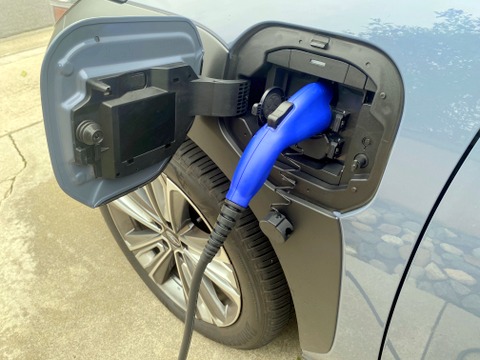Building in Resilience for the EV Ecosystem
An essential prerequisite for the wide-scale adoption of electric vehicles is the availability and reliability of EV infrastructure. This need becomes even more pronounced during times of natural disasters. As these incidents become increasingly prevalent, EV manufacturers and stakeholders must design resilient systems and frameworks to withstand such events, especially in disaster-prone areas.
The Challenges
When disaster strikes, the immediate response is to evacuate the area as quickly as possible. For most people, this means getting into their vehicles and driving to safer locations, however far away, but for people with EVs, it’s about getting as far as their current battery charge can take them.

The limited driving range of these vehicles means drivers must stop to recharge occasionally, which is not much of an option during an evacuation.
If drivers make it to an EV charging station, they must contend with another potential problem. Natural catastrophes such as hurricanes and floods can cause widespread power outages. Without an electricity supply, they are stranded there.
Charger compatibility is also a huge concern as software connections can vary significantly by vehicle and charging equipment type. Furthermore, depending on the kind of disaster, charging up an EV can be incredibly difficult. In Chicago, there have been reports of EV batteries not charging because of freezing weather.
Currently, public policy regarding natural disasters has no explicit provisions for EV drivers who cannot follow the same evacuation procedures as gas-powered vehicle owners.
Key Features of Disaster-Ready EV Infrastructure
Designing electric vehicles and related systems with disaster resilience in mind involves considering several key features and strategies. At the very least, efforts must include the following essential elements.
Reliable Power Supply
Ensuring uninterrupted electricity supply across all charging stations is critical. Features such as alternative energy sources, backup power systems and energy storage solutions must be present in these locations.
Elevated Charging Stations
Less than 20 inches of water can sweep away cars, SUVs and trucks. As such, charging stations in flood-prone areas must be situated on higher ground to ensure uninterrupted EV charging and minimize further risks. Ideally, these stations should be wide enough to cater to multiple vehicles simultaneously to reduce backups on roads leading to them.

Quicker Charging Times
There are currently three charging levels, with Level 3 (DC fast charging) systems offering the quickest charging times. Level 2 chargers can take up to eight hours to charge an EV—precious time drivers simply don’t have when trying to escape a natural disaster.
Waterproof Battery Casing
EV batteries and saltwater are a catastrophic fire hazard waiting to happen. Hurricanes Ian and Idalia, in 2022 and 2023, respectively, were huge eye-openers for EV owners as reports of vehicles catching fire became increasingly prevalent after the hurricanes had passed through. EV battery casings require the highest level of waterproofing to mitigate such risks.
Adequate Chargers
Research shows there could be over 26 million EVs on U.S. roads by 2030—and while that’s a good thing for the environment, there aren’t enough charging stations to accommodate the projected boom. McKinsey estimates the country must have at least 1.2 million public and 28 million private charging stations by that year to meet demand.
Resilient EV Infrastructure in the Face of Disasters
The environmental and economic benefits of switching to electric vehicles are undeniable. However, their adoption rates will remain moot until EVs have the necessary design features and infrastructure to withstand and recover from the rigors of natural disasters. EV manufacturers and policymakers must jointly address these challenges.

2 thoughts on “Designing Disaster-Proof EV Infrastructure”